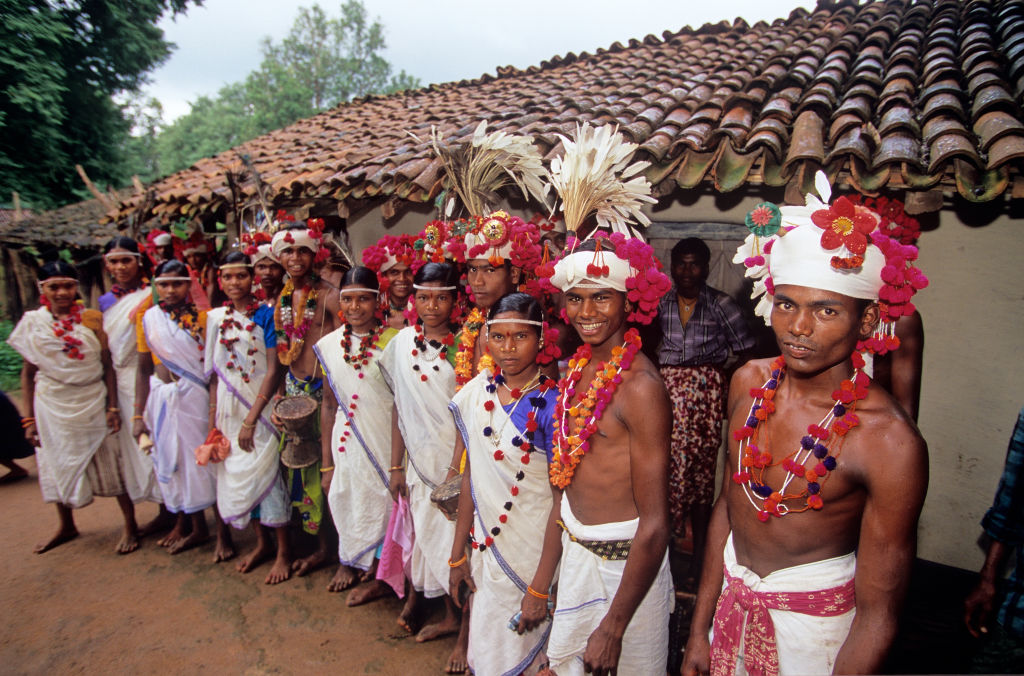The annual budget of the Ministry of Tribal Affairs has nearly tripled, going from ₹4,497.96 crore to ₹13,000 crore, and total tribal spending across 42 ministries grew five-fold to ₹1,24,908 crore under the Development Action Plan for Scheduled Tribes (DAPST) both in the past decade. In 2013-14, the tribal spending across ministries was ₹21,525.36 crore.
DAPST encompasses over 200 schemes across key sectors including education, health, agriculture, skill development, livelihoods and sanitation. The 42 ministries allocate from 4.3% to 17.45% of their budget each year under DAPST.
What’s India doing for Tribals?
The tribal communities of India face various developmental gaps in infrastructure and education. Several schemes have been launched to address the situation, promote tribal cultures and safeguard tribal rights.
PM Janjatiya Unnat Gram Abhiyan: Program for Tribal Village Development
PM Janjatiya Unnat Gram Abhiyan, also known as Dharti Aaba Janjatiya Gram Utkarsh Abhiyan, was launched on October 2, 2024, from Hazaribagh in Jharkhand.
The program has a budget of ₹79,156 crore and involves 17 line ministries collaborating to bridge critical gaps in social infrastructure, healthcare, education, and livelihoods in approximately 63,843 tribal-majority villages and Aspirational Districts (112 of India’s most underdeveloped districts) through March 31, 2029.
PM Janjati Adivasi Nyaya Maha Abhiyan: Targeting the Particularly Vulnerable
The Pradhan Mantri Janjati Adivasi Nyaya Maha Abhiyan works towards the socio-economic development of 75 Particularly Vulnerable Tribal Groups (PVTG) communities. The total budget of the scheme is ₹24,104 crore. It is estimated that approximately 47.50 lakh PVTGs are living across 19 states and union territories (UTs).
PM Janjatiya Vikas Mission: Supporting Tribal Livelihood
The Pradhan Mantri Janjatiya Vikas Mission (PM JVM), launched in 2021, operates through Tribal Cooperative Marketing Development Federation of India Limited (TRIFED) to promote tribal entrepreneurship and forest-based livelihoods.
Education and Health
Eklavya Model Residential Schools (EMRS) provide quality education to tribal children, supporting their health and development. Currently, 1.38 lakh students study in 479 operational schools, with plans to establish 728 schools for 3.5 lakh students.
Tribal Entrepreneurs
The Ministry of Tribal Affairs organised Dharti Aaba TribePreneurs in April 2025, bringing together 45 tribal startups to showcase innovations and network with investors and startup leaders. The ministry established a ₹50 crore Venture Capital Fund for Scheduled Tribes and partnered with premier institutions, including IIMs, IITs, IFCI, and META.
How India promotes Tribal culture?
Janjatiya Gaurav Divas is celebrated on November 15 to honour tribal freedom fighter Birsa Munda and recognise tribal contributions to India’s freedom struggle. In 2024, marking Munda’s 150th birth anniversary, Prime Minister Narendra Modi launched ₹6,640 crore in tribal development projects.
In February 2025, during the festival, over 600 tribal artisans and 500 performing artists from more than 30 states and union territories showcased various tribal cultures and dances.
Speaking on Bhagwan Birsa Munda’s birth anniversary last year, PM Narendra Modi said, “Let our sensitivity and compassion for society deepen. Let us commit to including every member of our community — the poor, the Dalits, the backwards, the tribals — and advance together with this resolution.”
India’s tribal development represents a transformation from marginalisation to empowerment, aligning with the goals of the United Nations regarding the development of indigenous peoples.














